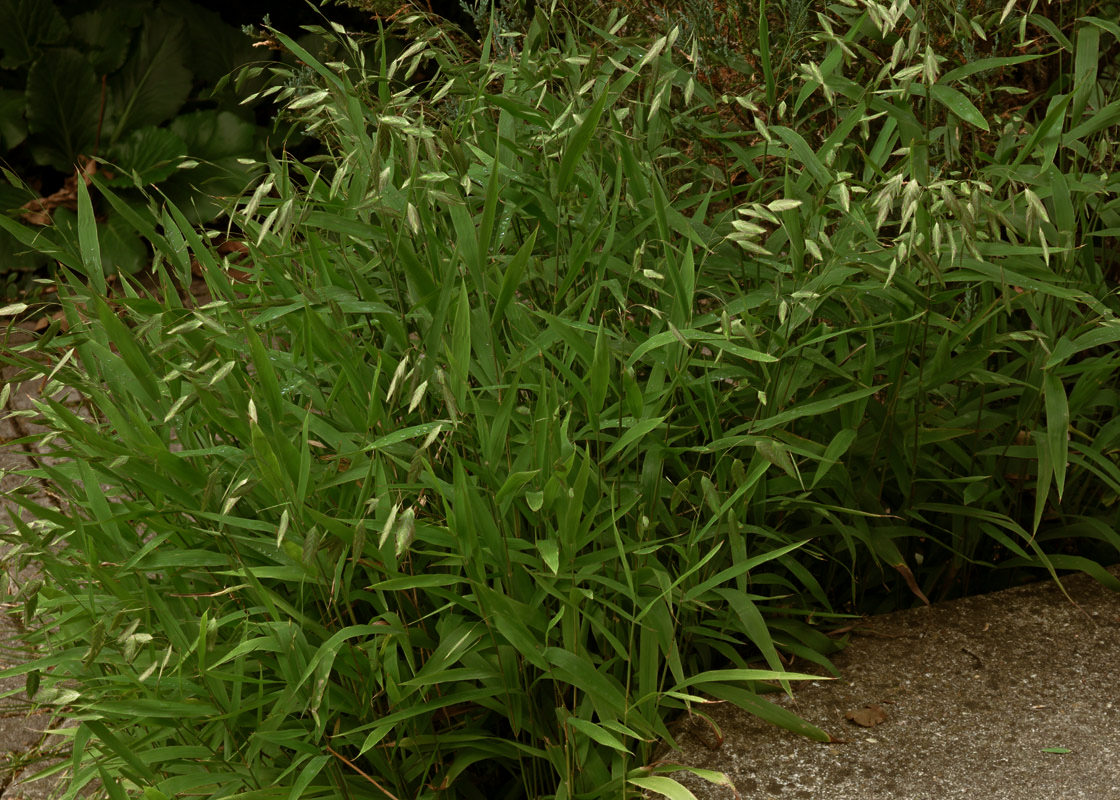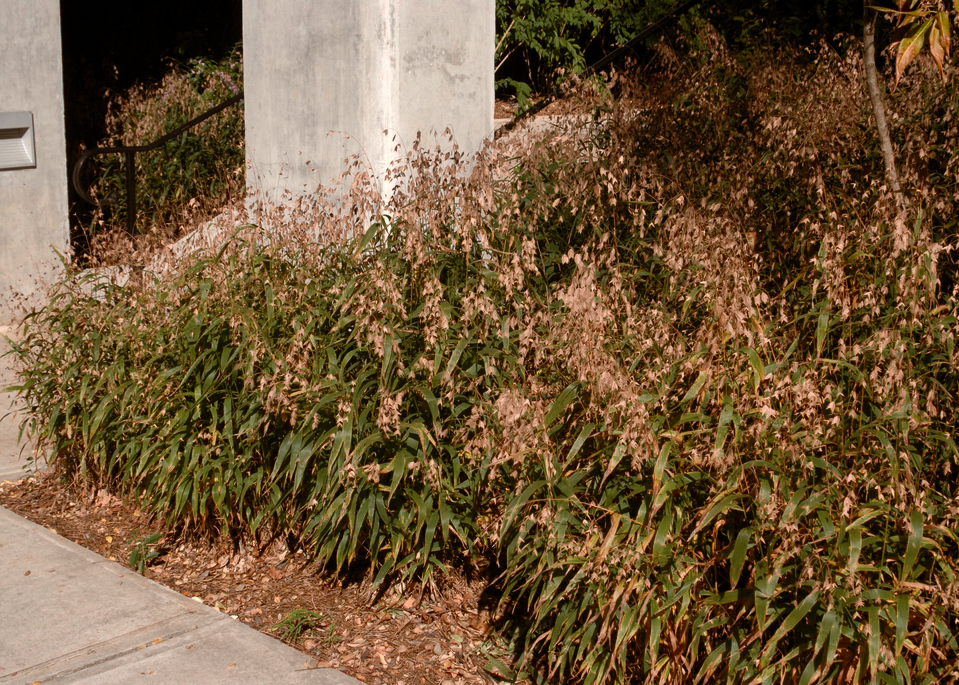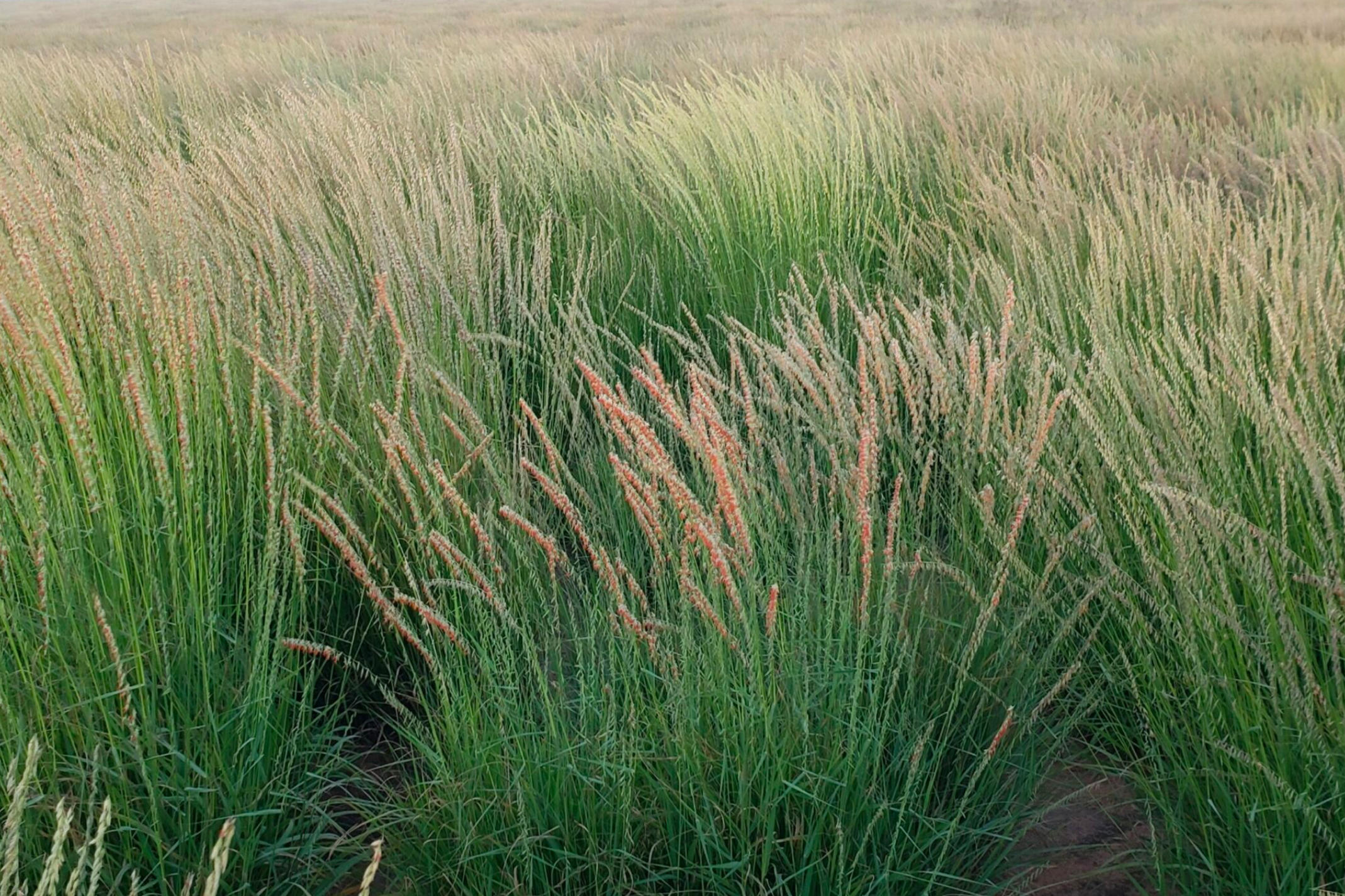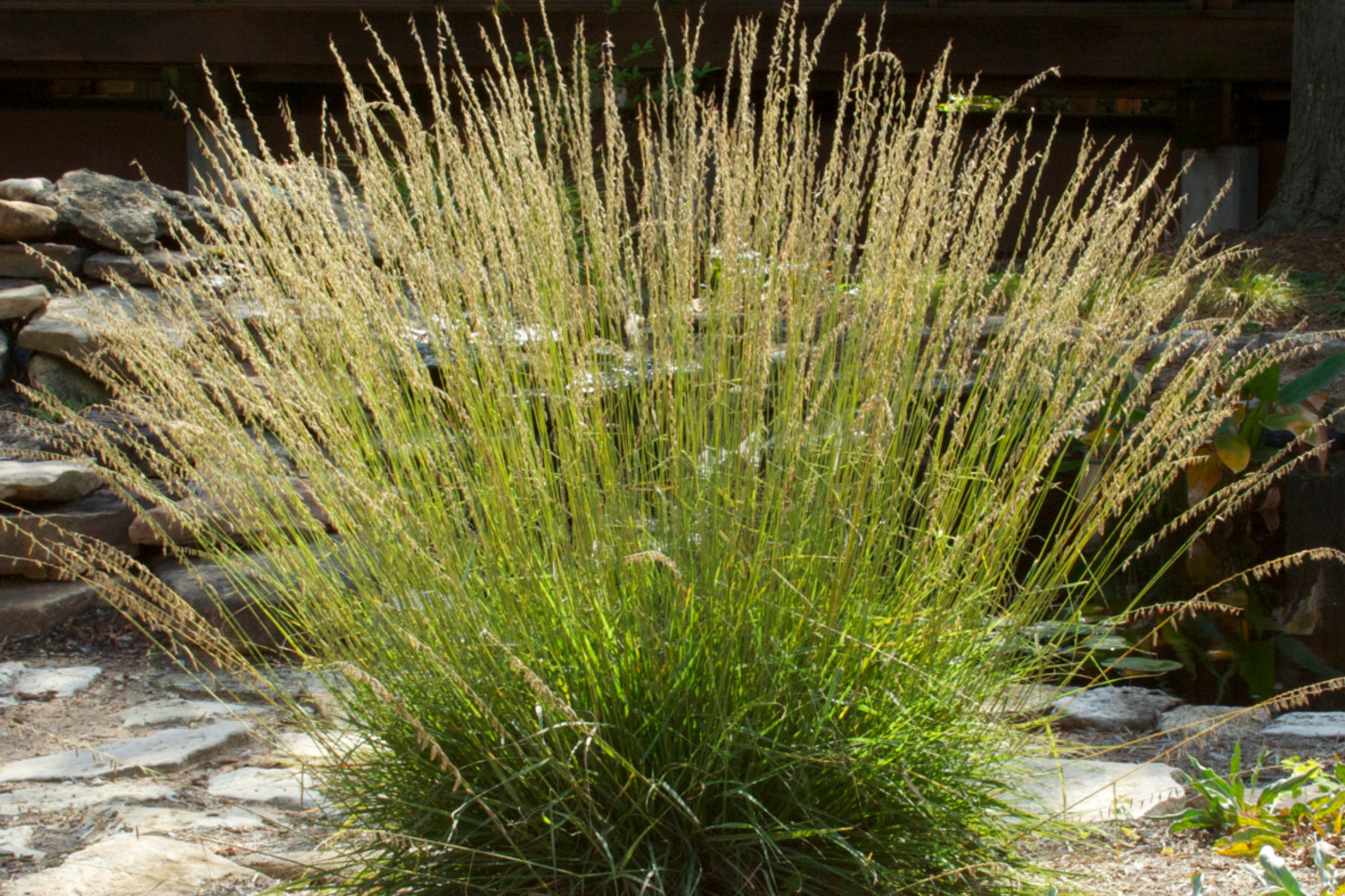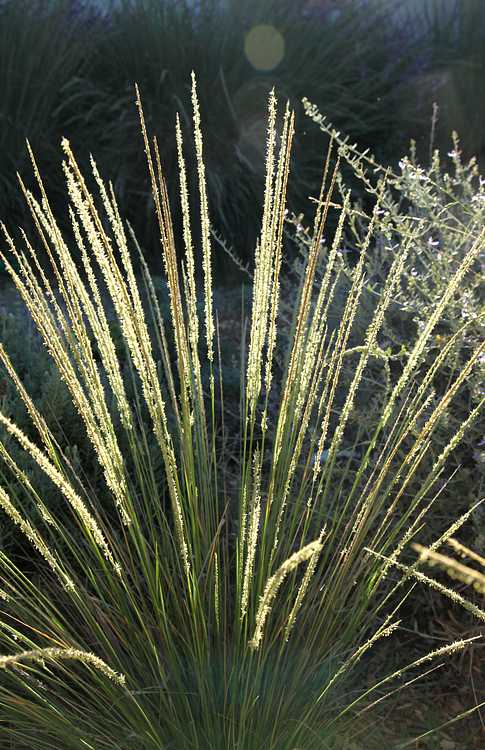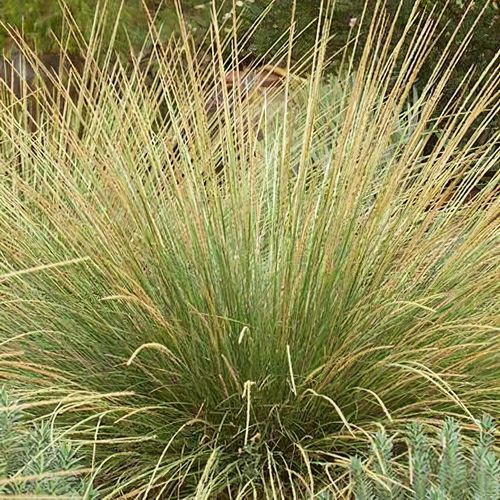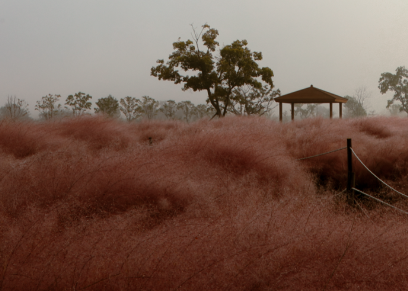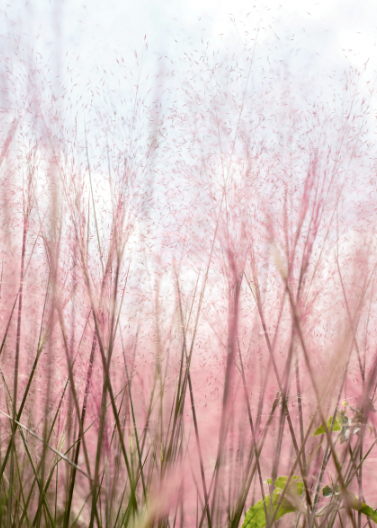Panicum virgatum ‘Northwind’ is a switchgrass that stands out from others due to its reliable upright habit and stunning blue-green foliage. It is highly tolerant to drought and can even withstand boggy soil conditions. From late summer, the plant produces numerous narrow, open panicles atop the plant. A single Panicum virgatum ‘Northwind’ in a garden creates a striking vertical accent, while several planted as a backdrop form a dynamic structural look. It was introduced by Roy Diblik of Northwind Perennial Farm, Lake Geneva, WI.
In 2014, Panicum virgatum ‘Northwind’ was named Perennial Plant of the Year© by the Perennial Plant Association. This award is given to plants that can perform well in various growing climates, require low maintenance, offer multiple-season interest, and are relatively pest and disease-free. ‘Northwind’ is the third grass to receive this prestigious award.rd.rd.
Switchgrass, also known as Panicum virgatum, is an ornamental grass native to Texas. It was once an essential part of the tallgrass prairie that covered a large portion of the state. This warm-season grass grows in clumps and typically stands at 3 feet. During the flowering season, the plant produces finely textured, pink-tinged, branched flower panicles that can bring the total plant height up to 6 feet. The medium green leaves turn yellow with orange tints in autumn and fade to tan-beige in winter. The panicles turn beige as the seeds mature in fall, and the seed plumes persist well into winter, providing food for birds.
Switchgrass can proliferate in medium to wet soils, in full sun to part shade. It can tolerate many soils, including dry ones, but prefers moist, sandy, or clay soils. Although it can take occasional flooding, it may flop in overly rich soils. The grass performs best in full sun and may lose its form in too much shade, rising more openly and possibly falling over. It grows primarily in clumps but will slowly spread by slightly creeping rhizomes. Clumps should be cut back to the ground in late winter to early spring. While plants may self-seed in optimum growing conditions, cultivars may not come true from seed.




















